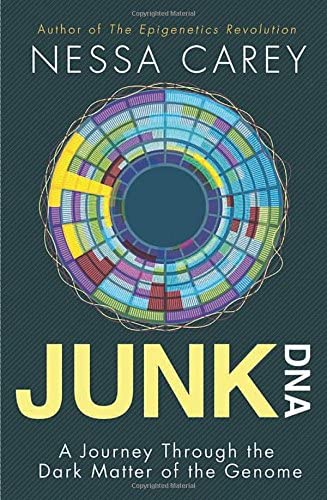|
|
Junk DNA A Journey Through the Dark Matter of the Genome
Nessa Carey
Columbia University Press, 2015
ISBN: 978-0-231-17084-0
|
Following her wonderful first book, “The Epigenetics Revolution”, Carey tackles another complex field in the realm of genetics: Junk DNA (or non-coding DNA to be more precise). This is the second of four books she has published to date (2022), and my expectations were quite high. The author explained epigenetics so effortlessly in her first book, that it was reasonable to assume that another magnificent and thorough summary was being presented to the world. Alas, to my surprise, Carey decided to greatly simplify this tome to make it more accessible to the general reader. This at first glance should not be a bad thing (increased accessibility is always welcome), but the end product is so superficial that it feels perfunctory, like the school essay that is completed the night before it is due.
To be fair, Carey acknowledges in the “Notes on Nomenclature” that she received some backlash from many of her readers (and book reviewers) for making her first book very jargon heavy and dense, and as such wanted to adjust her style. Unfortunately, the result is a book that describes fascinating genetic phenomena without mentioning the cast of characters (except on rare occasions as a footnote, all others only discernible by digging through the reference material provided), which feels somewhat irritating and even patronizing. It is understandable that gene names, being as dry as they usually are, can be intimidating to some, but replacing them with a simple descriptor such as “scissors enzyme” or “11-fingers” is an unnecessary oversimplification for an intelligent adult readership. Indeed, imagine if a novice to J.R.R. Tolkien were to learn about an “elf ruler” or a “wizard” rather than “Elrond” or “Gandalf”, respectively, simply because the names were strange sounding.
So, will the reader be introduced to such concepts as long and short non-coding RNA’s, untranslated regions (UTR’s), introns, promoters and enhancers? Yes. However, the curious and thoughtful reader will not find enough here to satiate his/her appetite.

